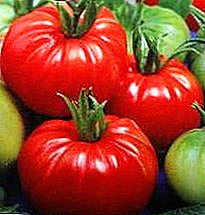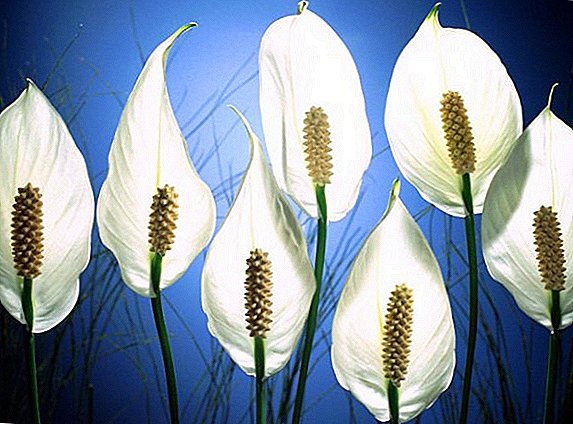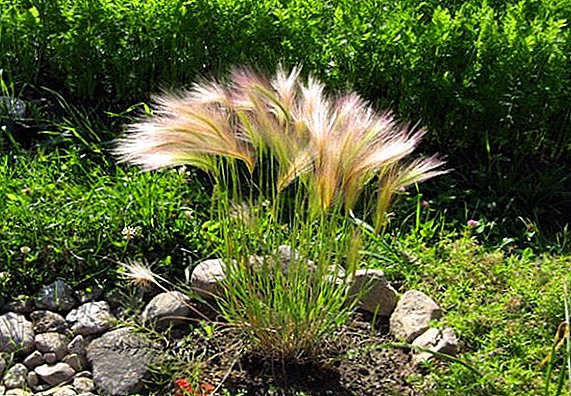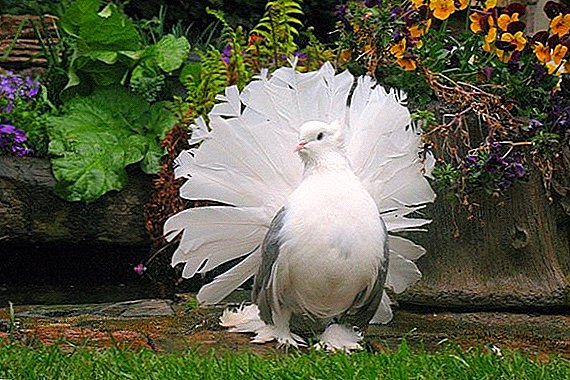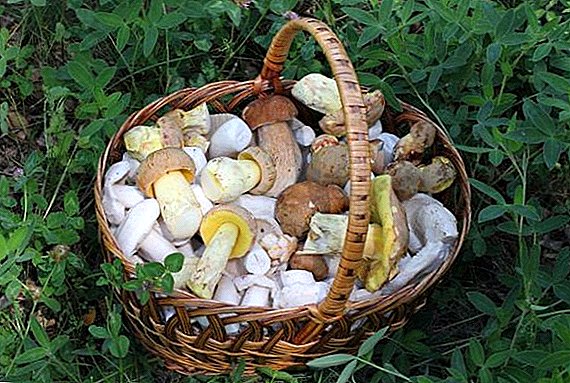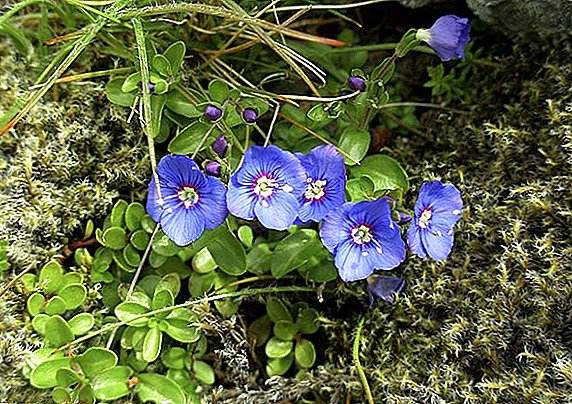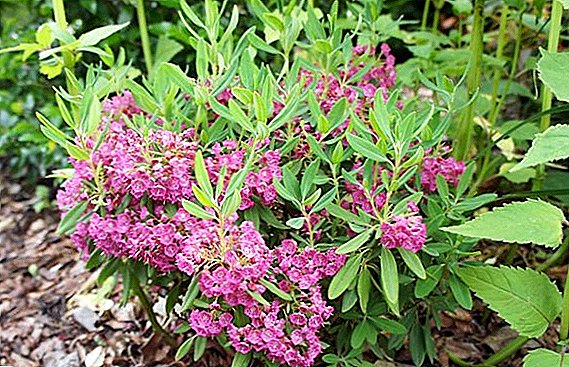
Many gardeners liked indoor flower gloxinia. It has a huge number of species, one of which is Tidea violet. It is very beautiful and fits perfectly into any room interior.
In the people this flower has many names. Perhaps you know him as "the beautiful Synnengia."
In this article we will take a closer look at the botanical description and the history of the plant's appearance, how to properly care for it, the rules of planting, the methods of reproduction, and possible problems during cultivation.
Botanical description and history
Gloxinia violet violet is a perennial plant of the Gesneriaceae family. Eukaryotic, dicotyledonous plant. It has bell-shaped flowers. Flowers solitary, coming out of the sinuses, have 4 stamens. The stem is erect.
Originally from tropical America. There are more than 65 flower varieties.. The first species was discovered in 1785 by a German physician and naturalist, Benjamin Peter Gloxinia. In honor of him, and was given the name of the flower. Hybrids of natural gloxinia species are the most popular.
- Kaiser Wilhelm and Friedrich.
- Sonata.
- Shahane
- Krasnoyarsk and Red Riding Hood.
- Brocade.
- Rosalind.
- Yesenia.
- White terry.
- Pink
- Lofospermum or Lofos - clinging gloxinia.
Differences
Many people confuse these two flowers with each other. Gloxinia has a variety called Tidea Violet. It is called so, because it is very similar to its distant relative. Let us examine what are the differences between these plants.
- Tidea. Root system - scaly rhizome. Flower shape - shoe-shaped. Leaves - light, pubescent, with small notches.
- Gloxinia. The root system is tuberous. The shape of the flower - resembles an elongated bell. Leaves - dark, fluffy, with larger cloves.
Appearance and features
Plant height - up to 40 cm. The flowers are luxurious, velvet, tubular, purple in color, like bells. Flowering lasts from May to September.
If you provide the plant with suitable conditions, then during the flowering period you can see up to 20 buds.
A photo
In the photo you can see the purple tea gloxinia.





Landing
To get a healthy plant you need the correct planting of its tuber. He looks around carefully. When detecting traces of rot or sick, damaged areas must be removed. Circumcision of unhealthy areas is carried out only with a sharp knife. Then the tuber is dried for 24 hours, immersed in a solution of manganese for half an hour and only after that they are transferred to planting.
For landing you will need:
- drainage;
- priming;
- pot.
Go to the landing.
- The pot is selected 5-6 cm larger than the size of the tuber.
- A drainage layer up to 3 cm thick is laid out on the bottom of the pot.
- On top of the drainage poured a small amount of soil.
- The tuber is submerged in the substrate so that the tip remains above the pot.
- After planting is finished, it is necessary to moisten the substrate. This should be done carefully, do not get water on the plant.
- When the stems grow, the remaining tuber tuber above the ground is covered with substrate.
Lighting and location
The plant prefers diffused light. Best perceives eastern and western windows. Lighting should be sufficient for long flowering.
The flower must be pritenyat from the scorching sun, so as not to destroy the leaves.
Soil requirements
The soil should be light, loose and breathable. The plant prefers a slightly acidic soil. The best option would be to use a special purchased substrate for gloxinia. The flower does not tolerate stagnant water. Be sure to use good drainage.
The soil for planting should be nutritious. No need to plant gloxinia in a large pot.
Care
 Gloxinia loves high humidity but water on the plant can destroy it. It is best to put a vessel near the water or spray the air, avoiding water on the leaves and flowers. Since the flower does not like dry air, it is best to place it away from radiators and artificial heating foci.
Gloxinia loves high humidity but water on the plant can destroy it. It is best to put a vessel near the water or spray the air, avoiding water on the leaves and flowers. Since the flower does not like dry air, it is best to place it away from radiators and artificial heating foci.Watering should be regular (once every four days). For irrigation, use extremely soft, separated, warm water. In autumn and winter, watering is reduced to 1 time per week. Water the plant can only be in the pan.
Do not allow waterlogging, it is fraught with the death of the plant.
- The flower does not like low temperature, prefers moderate. During the flowering period, the air temperature should not be below 18 degrees. But gloxinia also does not tolerate heat, it will be optimal to provide it with a temperature not higher than 28 degrees.
Do not allow drafts and sudden changes in temperature. With such conditions, the flower can be destroyed. It is necessary to fertilize a flower once a month with liquid fertilizer. Before using it, the flower must be watered well.
- Flower necessarily need a period of winter dormancy. With the arrival of autumn, the leaves slowly die off and the flower falls asleep until March. At this time, you only need to slightly moisten the soil of the plant, additional care at this time is not required.
Diseases and pests
The flower often affects fungal diseases (late blight, powdery mildew, septoria, downy mildew, gray mold).
To avoid this, it is necessary to ventilate the room with plants, but this should be done in warm weather.
As chemical means of struggle fit:
- previkur;
- topaz;
- any fungicides.
- Anthracnose is a disease that causes a flower to die. It is expressed by small dark spots on the surface of the plant. For treatment and prophylaxis you can use: fungicides, copper oxychloride, cuproxate, oxy.
- Ascozitosis and phyllosticosis are diseases that appear due to high humidity. It is characterized by brown and red spot. Affected leaves must be removed and burned. The remaining plant to process: copper sulphate, Bordeaux mixture or fungicide.
- Also, the plant may be infected with viruses, bacteria and pests.
- Thrips - affect the entire plant (leaves, stems and flowers). Before processing plants need to transplant. After transplantation, treat with any of the insecticides: fitoverm, aktar, karate, etc.
- Spider mite You can see it on the web, which it leaves on the surface of plants and soil. To get rid of the pest, you need to remove all damaged leaves and work off the plant with insecticide.
Breeding
Propagated by cuttings, leaves and seeds.
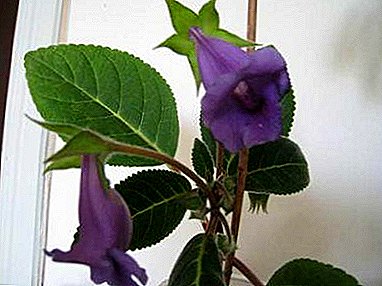 Sowing of seeds is carried out on the surface of light peat soil. Powdered seeds are not required. Watering is drip, settled and warm water. On top of the seeds need to cover the package, thereby creating the effect of the greenhouse. We air every day and remove condensate. Shoots appear after about 7-10 days.
Sowing of seeds is carried out on the surface of light peat soil. Powdered seeds are not required. Watering is drip, settled and warm water. On top of the seeds need to cover the package, thereby creating the effect of the greenhouse. We air every day and remove condensate. Shoots appear after about 7-10 days.- Leaflets. A strong leaf is cut, placed in a glass of water so that half of the stem is covered with water. After 10-15 days, the leaves are tied with roots, but do not rush. Keep the leaf in the water for at least another week. Only after the roots have strengthened, you can proceed to planting.
- Cuttings, from one leaf, you can get a large number of new plants. Planting material is cut off with a sharp blade. Cut the stalk must be dipped in activated carbon and give it time to dry (10-15 minutes). We divide the leaf into several parts so that each part has a vein, and we plant it in a greenhouse. Pieces of the leaf need to ensure immobility, so that they quickly take root.
Similar flowers
- Tidea - very similar plant, with the same flowers and leaves. It differs only rhizome and inflorescence.
- Streptocarpus. A plant with the same oblong leaves and large flowers. Have terry, curly leaves.
- Coleria - a similar flower, has small scaly tuberous rhizomes, large leaves and large inflorescences.
- Violets. Saintpaulias are also very similar to Gloxinia, but mostly leaflets. The plant itself is smaller than gloxinia, the flowers and leaves are also smaller.
- Ruelia - The similarity with gloxinia has only flowers. The leaves and height of the bush are absolutely excellent, but the flowers have a similar shape and about the same size.
To summarize, even a beginner can grow gloxinia. If you like this plant, then it will not be difficult to keep it on your windowsill. It is enough to create favorable conditions for him and he will thank you with lush flowering.


 Gloxinia loves high humidity but water on the plant can destroy it. It is best to put a vessel near the water or spray the air, avoiding water on the leaves and flowers. Since the flower does not like dry air, it is best to place it away from radiators and artificial heating foci.
Gloxinia loves high humidity but water on the plant can destroy it. It is best to put a vessel near the water or spray the air, avoiding water on the leaves and flowers. Since the flower does not like dry air, it is best to place it away from radiators and artificial heating foci. Sowing of seeds is carried out on the surface of light peat soil. Powdered seeds are not required. Watering is drip, settled and warm water. On top of the seeds need to cover the package, thereby creating the effect of the greenhouse. We air every day and remove condensate. Shoots appear after about 7-10 days.
Sowing of seeds is carried out on the surface of light peat soil. Powdered seeds are not required. Watering is drip, settled and warm water. On top of the seeds need to cover the package, thereby creating the effect of the greenhouse. We air every day and remove condensate. Shoots appear after about 7-10 days.